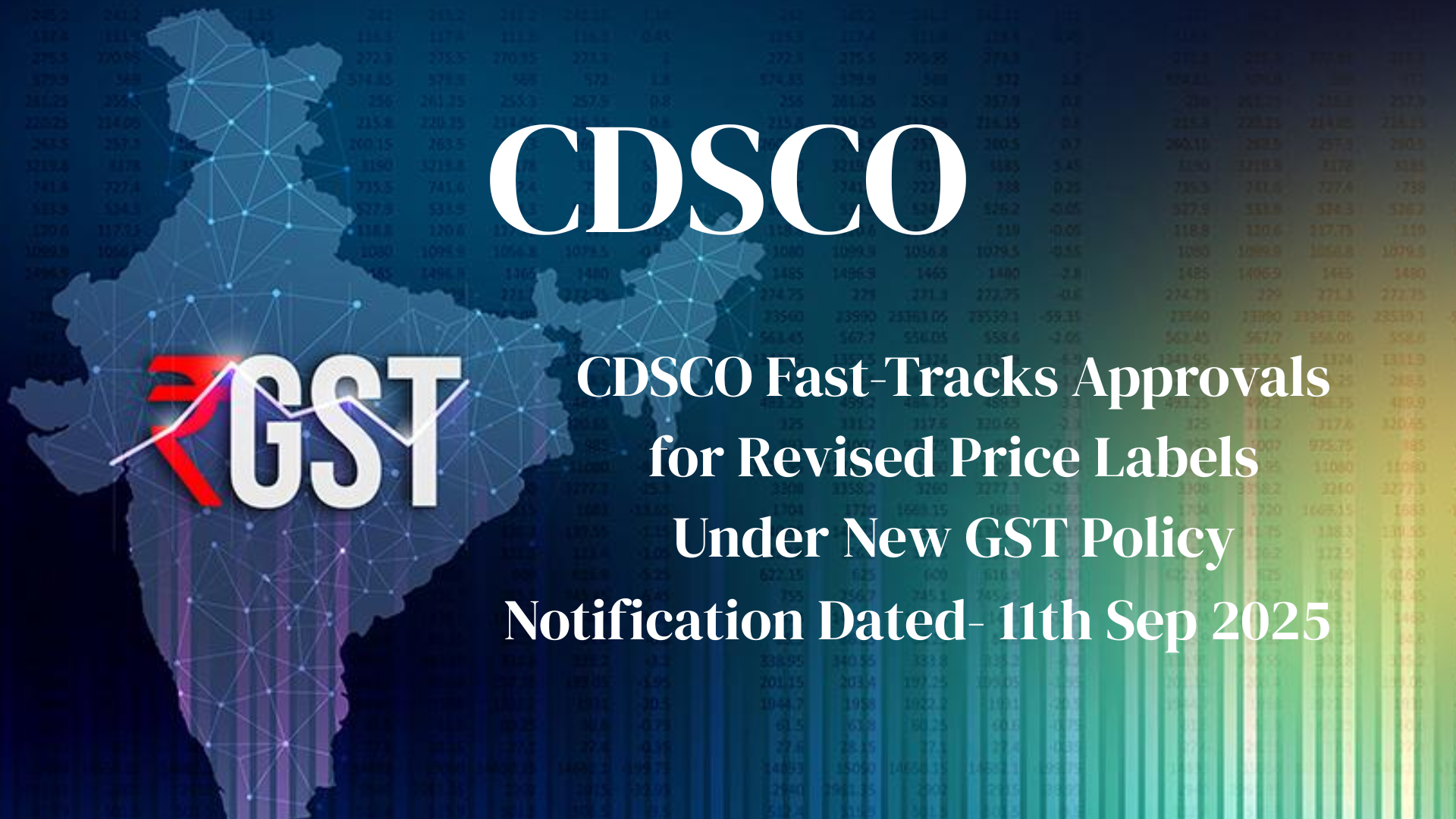
CDSCO Fast-Tracks Approvals for Revised Price Labels Under New GST Policy
CDSCO Fast-Tracks Approvals for Revised Price Labels Under New GST Policy
In a move aimed at ensuring smooth implementation of the recent Goods and Services Tax (GST) rate rationalisation, the Central Drugs Standard Control Organisation (CDSCO) has urged state and central drug regulators to expedite the issuance of “no objection’ approvals for pharmaceutical manufacturers seeking to revise price labels on their products.
Changes as per the New GST Directive
This directive comes in the wake of the GST Council’s recommendations during its 56th meeting in New Delhi, chaired by Union Finance Minister Nirmala Sitharaman, where significant tax cuts on drugs and medical devices were approved. The revised GST rates will come into effect from September 22, 2025.
According to CDSCO’s communication to drug controllers across States and Union Territories, prompt action is required to facilitate the stickering or re-labelling of products in accordance with the new pricing norms under the Drugs and Cosmetics Act, 1940. The agency has specifically requested that approvals for altering labels be fast-tracked to avoid any disruption in the supply chain.Action taken in the matter may be communicated to this Directorate, the CDSCO stated in its official letter.
Central Licensing Authority to monitor High Risk Medical Devices
Simultaneously, the Central Licensing Authority (CLA), which oversees higher-risk medical devices, has issued an order dated September 11, permitting the affixing of revised Maximum Retail Price (MRP) stickers on Class C and D medical devices. Manufacturers and importers will have a three-month window to implement the changes from the date of the order.
Class A and B medical devices,considered lower risk, will continue to be regulated by the respective State Licensing Authorities (SLAs).
Blanket Reduction of GST rates to 5 percent
The GST Council’s decision includes a blanket reduction of GST rates to 5% on all drugs and medical devices and a complete waiver of GST for 36 life-saving drugs.
In addition, GST on various medical and diagnostic equipment has been reduced-from 18% or 12% to 5%-covering items such as diagnostic kits, reagents, glucometers, bandages, wadding gauze, and other surgical and analytical instruments.
While the regulatory framework is being aligned swiftly to accommodate these revisions, the pharmaceutical and medical device industries have expressed concerns about the feasibility of re-labelling vast volumes of inventory within tight timelines.
Officials emphasized that the goal is to integrate the new pricing structure with minimal market disruption and ensure consumers benefit from the tax reductions without any compromise on product availability or safety standards.
Click here to Access the official guidance document
Note:
Cases related to Pharmaceuticals are highly technical and knowledge-driven. If you're searching for a drugs and cosmetics lawyer in India, a pharmaceutical lawyer, Mace Corporate Associates is the perfect place. If you are searching for a DPCO Lawyer for overcharging cases or DPCO Compliance, Mace can assist you well.
May it be a clinical trial Lawyer or a Medical device lawyer, Mace can be of great and perfect match for Pharmaceutical litigation. Mace has an accomplished track record for Not of Standard Quality Cases, Licensing Cases etc.
